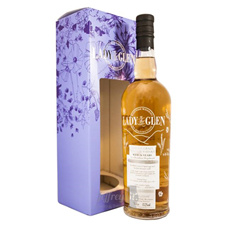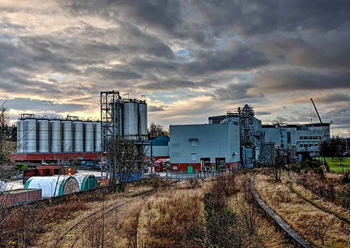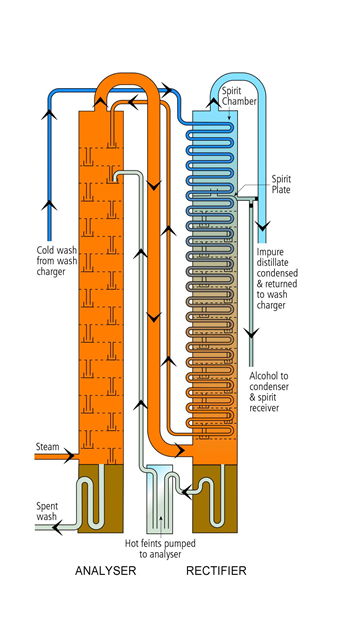Gregor’s Guide To Grain Whisky

Last year we released a few single grain casks of Whisky, a Girvan Grain and before that an Invergordon. In the future, we will continue to release single grain casks as matured grain is exceptionally tasty and good value.
It is a different product to Single Malt and probably has more in common with gin than single malt due to the way it is produced.
Scotland only has 7 grain distilleries compared to over 120 single malt distilleries, but grain distilleries are much larger – Diageo’s Cameron bridge has a capacity of 110,000,000 a year whereas Glenfiddich, with its 13 pot still produces 13,000,000.
 Cameron bridge Distillery
Cameron bridge Distillery
Grain whisky is made from different ingredients to single malt whisky. Grain can be 85-90% grain and 10 + 15% malted barley. By grain, we are referring to maize, wheat and other cereal products that are much cheaper than barley and which are usually cooked first. Single malt whisky can only be produced using malted barley. The spirit which is used to produce gin is called Grain Neutral spirit and can be 100% grain but the production of grain whisky requires adherence to legislation laid out in the Scotch Whisky Act 1998. Grain neutral spirit does not have to adhere to this act and therefore cannot be used in whisky but grain whisky could be used as a high-quality Grain Neutral spirit for gin.
Grain whisky is produced to be around 95 per cent ABV, whereas single malt is closer to 69 per cent ABV. Where in Scotch we look for a high concentration of congeners (flavour compounds) in grain the target is low congeners and greater rectification; more strength and smoothness. The reason for this is that most of the single grain whisky is used for blending; to act as a base for malts.
Grain whisky is distilled using continuous distillation whereas single malt whisky is doubled distilled in batches. Grain Neutral spirit is also distilled using continuous distillation. Continuous distillation was invented by Robert Stein in at Kilbagie Distillery in response to the growing demand for gin in the early 19th Century. Aeneas Coffey, who visited the distillery, was an exciseman from Dublin and after making a few ‘amendments’ to the design he patented it… Robert Stein would later take his design to his cousin’s distillery at Cameronbridge owned by John Haig.
 Coffey still
Coffey still
(Image taken from ScotchWhisky.com)
The ‘Coffey still’/Patent still is an incredible piece of kit which utilizes two columns to strip the alcohol from the Wash (this is the grain mixed with water after fermentation) and then rectify it to increase the alcohol level and purity. Once complete, the spirit that is to be made into whisky will be reduced from 95% to 63% and filled into casks to be matured for a minimum of 3 years like whisky.
If the spirit was to be used for gin it would be infused with botanicals and possibly re-distilled depending on the desire of the gin house but fundamentally the original distillation process is the same for gin and single grain whisky.